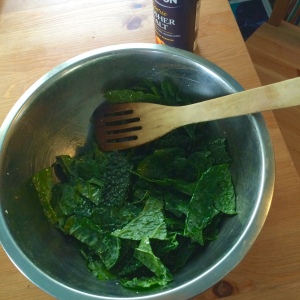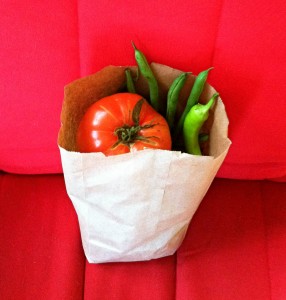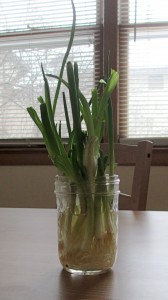 By Brenda Winter Hansen
By Brenda Winter Hansen
Are you and your wee ones getting cabin fever, wishing the world warm and in full bloom? Well, not even Punxsutawney Phil can make winter shorter, but with only a few special ingredients, you and the kids can bring your own personal spring inside.
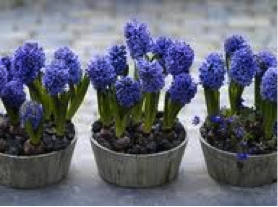 Forcing bulbs has long been a gardening tradition, and was all the rage in the 1800’s. It works by chilling flower bulbs for a few weeks, then bringing them into a warm environment to force them to bloom earlier than they might have outside. Seeing plants grow before your eyes in the dead of winter is fascinating at any age, and the payoff of a beautiful flower with a heady perfume to freshen up the air is a memorable thrill. Kids love helping out, and will probably ask for it every year. Just make sure to put down newspapers if you’re going to use potting soil.
Forcing bulbs has long been a gardening tradition, and was all the rage in the 1800’s. It works by chilling flower bulbs for a few weeks, then bringing them into a warm environment to force them to bloom earlier than they might have outside. Seeing plants grow before your eyes in the dead of winter is fascinating at any age, and the payoff of a beautiful flower with a heady perfume to freshen up the air is a memorable thrill. Kids love helping out, and will probably ask for it every year. Just make sure to put down newspapers if you’re going to use potting soil.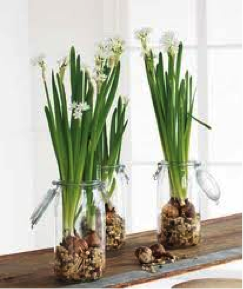
You’ll need bulbs first. If you’re like me, you probably have some in your garage that you never got planted in the fall. I’ve had the best luck with paperwhites (a.k.a. narcissus), daffodils, hyacinth, and crocus, though amaryllis and tulips are also fine choices. Amaryllis are often sold in drugstores already potted and ready to force. They are pricier, but the fanciest of flowers to force. If you don’t have any bulbs on hand, ask neighbors if they have any they didn’t get planted. If they do, make sure to make a forced bulb garden for them too. Assuming the ground isn’t frozen, you can also dig them up, if you remember where they are. Local hardware stores or nurseries are also likely to have inexpensive bulbs that have been chilled long enough to be ready to force.
Many resources say bulbs need to be chilled at a specific temperature for a specific number of weeks, but I’ve never paid much attention to those claims and have had great luck with late winter blooms. Once you have bulbs, it’s time to find containers. Narrow necked vases (called forcing vases) are perfect for paperwhites and hyacinth, but you can use old jam jars too. Narrow ones are good, but use some rocks, or several bulbs, to prop each other up if you use a wider jar. Wide shallow bowls, can be filled with rocks, pebbles, and just enough water to come to the top of them. Then, nestle a bunch of bulbs into the rocks (root side down, pointy side up!). The last way to force flowering bulbs is too find a shallow wide pot and sandwich the bulbs between two layers of potting soil, but make sure the points are just poking out of the dirt. The soil should be damp, not sopping wet.
 For all of these methods, leave the bulbs in indirect light until the first bits of green are poking out a bit. Otherwise the poor flowers might try blooming before it has much of a stalk. Once there is a stalk, give it a little more light and turn it a little everyday so the stalk grows straight. This is a great time to introduce phototropism to your offspring! Keep the kids interested by having them take notes and draw pictures every few days and you’ll have another fine example of art marrying science. Enjoy!
For all of these methods, leave the bulbs in indirect light until the first bits of green are poking out a bit. Otherwise the poor flowers might try blooming before it has much of a stalk. Once there is a stalk, give it a little more light and turn it a little everyday so the stalk grows straight. This is a great time to introduce phototropism to your offspring! Keep the kids interested by having them take notes and draw pictures every few days and you’ll have another fine example of art marrying science. Enjoy!
For more info, check out: http://www.oldhousegardens.com/forcingbulbs.asp
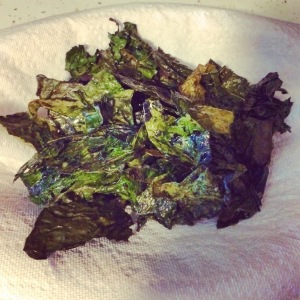 We are always looking for ways to introduce nutritious snacking option to our kids.
We are always looking for ways to introduce nutritious snacking option to our kids.